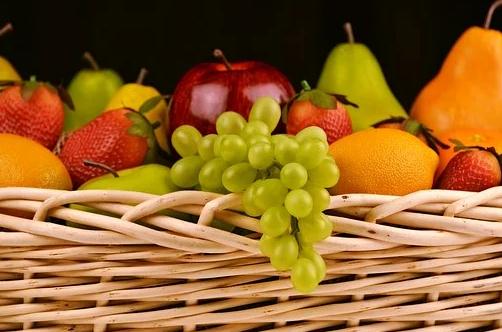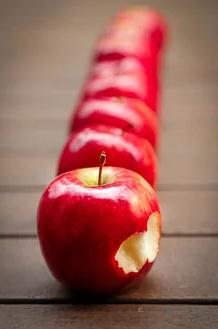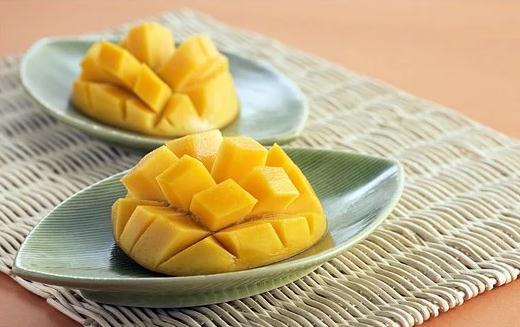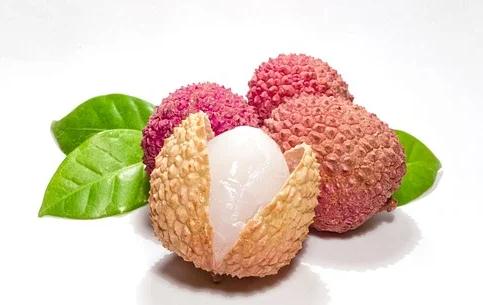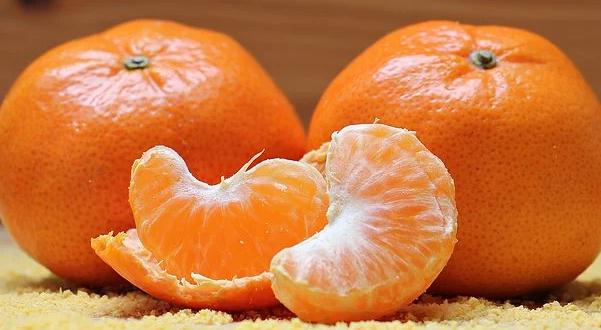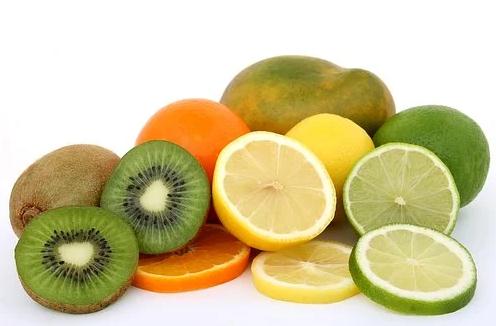Fruits are considered essential in all seasons particularly because of the mass health benefits associated with them. The fruits don’t only provide for a good sweet taste but are packed with loads of minerals and vitamins that help in overcoming different medical problems and diseases as well. Follow this guide to find out more about different types of fruits.
Ultimate Guide to the Different Types of Fruits
Types of Fruits
Every seasonal fruit is rich in flavor because there is less to no chemical used for their cultivation or survival. Fruits are commonly divided into two categories: Summer Fruits and Winter Fruits.
Summer Fruits
Fruits that are classified as summer fruits are generally known as fruits full of colors. It is a thumb rule that the brighter the color, the higher the nutritional index. Therefore, you can imagine the nutrition present in summer fruits.
During summer temperature remains hot, which results in excessive sweating, dehydration, and skin sensitivities. With the change in season, we should change our diet. Most of the summer fruits are bursting with antioxidants and phytochemicals. Here is a list of some summer fruits that are common around the world.
Mango
Many people out there love summers just because of mangoes. They are mostly yellow and full of sweetness. There are many varieties of mangoes available in markets such as Alphonso, Sindhri, Ataulfo, Haden, Julie, and Carabao. Although mangoes are high in calories, they are still considered a rich source of fiber and beta-carotene. Mangoes are very beneficial for heart health. Eating mangoes also reduces the risk of certain cancer developing cells. For its exceptional taste, and massive love from the public, Mango is known as the King of Fruits.
Nutritional Benefits (1cup)
- Calories: 99
- Protein: 1.4 grams
- Carbs: 24.7 grams
- Fat: 0.6 grams
- Dietary fiber: 2.6 grams
- Vitamin C: 67% RDI
- Copper: 20% of the RDI
- Vitamin B6: 11.6% of the RDI
- Vitamin A: 10% of the RDI
- Vitamin E: 9.7% of the RDI
- Vitamin B5: 6.5% of the RDI
- Vitamin K: 6% of the RDI
- Vitamin B3: 7% of the RDI
Watermelon
Watermelons are seasonal fruit that originated from South Africa. They have a green smooth rind with soft juicy red fruit inside. In summer, they are eaten as a snack and loved by all. Watermelons are deliciously sweet with extremely high water content; 95% to be exact. This is one reason why watermelons are considered a summer fruit. Furthermore, Watermelons are great for all summer-related health issues including kidney problems, acne, asthma, constipation, and water retention.
Nutritional Benefits (1cup)
- Calories: 49.2 kcal
- Carbohydrate: 15.6 g
- Fiber: 1.2 g
- Sugar: 10.1 g
- Fat: 0.4 g
- Protein: 10.4 g
- Vitamin C: 24% RDI
- Vitamin A: 22% RDI
- Vitamin B5: 5% RDI
Lychee
Lychee is considered a tropical fruit. They are a bit pink-red and have a white inner fruit with a huge seed inside. Lychee is sweet and eaten fresh from the farmer’s market. This amazing fruit has many benefits for humans. Lychees aid in digestive problems as well as help in reducing weight, maintaining vision and bone health. Moreover, they also reduce acidity and skin-related issues.
Nutritional Benefits (1cup)
- Calories: 109 kcal
- Carbohydrate: 28 g
- Fiber: 2.1 g
- Sugar: 25 g
- Fat: 0.7 g
- Protein: 1.3 g
- Vitamin C: 118% RDI
- Copper: 10% RDI
- Vitamin B6: 8% RDI
- Vitamin B2: 6% RDI
Apricots
Apricots originated in China. The skin of apricot has a yellowish-orange color to it along with a touch of red. Apricots are sweet and can be enjoyed fresh and in dried form. They are easily available all around the world. Some people even like consuming dry apricots. Moreover, Apricots are full of calcium and dietary fiber. Rich in Vitamin A and Vitamin C, apricots help in anti-aging and promote a strong immune system.
Nutritional Benefits (1cup)
- Calories: 79 kcal
- Carbohydrate: 18 g
- Fiber: 3.3 g
- Sugar: 5.2 g
- Fat: 0.7 g
- Protein: 2.3 g
- Vitamin A: 19% RDI
- Vitamin C: 10% RDI
- Vitamin E: 4% RDI
Winter Fruits
Winter may not seem colorful itself but it provides so many colorful fruits that are very essential for your health. Moreover, eating seasonal fruits is considered best as they fulfill all the nutritional requirements for that season. Colder temperatures promote many viral infections like the flu. As temperature decreases skin also starts to get dryer and dull.
Adding winter fruits to your diet helps in boosting immunity and promotes good health to deal with seasonal problems. Here is a list of some winter fruits that are common around the world.
Oranges
Oranges have a hard outer and a soft center, with a mix of sweet and sour tastes. As shown by its name they are orange in color. This trendy fruit is among the most common citrus fruits around the world. There are hundreds of varieties in oranges that vary from sweeter to bitter. They are high in Vitamin C content and carbohydrates. Oranges help to strengthen the immune system to fight throat-related issues and also prevent anemia and kidney issues.
Nutritional Benefits (1cup)
- Calories: 86.5 kcal
- Carbohydrate: 78.8 g
- Fiber: 4.4 g
- Sugar: 17.2 g
- Fat: 0.2 g
- Protein: 1.7 g
- Vitamin C: 163% RDI
- Vitamin B1: 11% RDI
- Vitamin A: 8% RDI
Kiwi
In some countries, kiwi is also known as Chinese gooseberry. It is considered among the most famous fruits in the world which is available in winter. They taste mostly sweet with a hint of sourness in it. They are not cultivated in high quantities which is why they cost high.
In appearance, the outer layer of the Kiwi has a brownish tone to it with a green fruit inside. Typically, they are easy to cultivate and found around the world. Kiwis are high in potassium, magnesium, and zinc. Kiwis are considered best for preventing certain cancers and are also known for their anti-aging properties.
Nutritional Benefits (1cup)
- Calories: 46.4 kcal
- Carbohydrate: 11.1 g
- Fiber: 2.3 g
- Sugar: 6.8 g
- Fat: 0.4 g
- Protein: 0.9 g
- Vitamin C: 117% RDI
- Vitamin K: 38% RDI
- Vitamin E: 6% RDI
- Copper: 4% RDI
Grapes
Grapes come in many colors and sizes. They are among the most prevalent types of fruits. You can choose between red, green, and purple grapes as they all are packed with nutrition. Grape juices are also very common at dinner tables. They are packed with a whole range of multivitamins and nutrients that provide you with essential health benefits as well. The health benefits of grapes include creating healthy skin cells and decreasing the risk of diabetes. Grapes are versatile fruits as they are used in many jams and jellies.
Nutritional Benefits (1cup)
- Calories: 81 kcal
- Carbohydrate: 22.1 g
- Fiber: 1.9 g
- Sugar: 25.5 g
- Fat: 0.4 g
- Protein: 1.0 g
- Vitamin C: 23% RDI
- Vitamin K: 23% RDI
- Vitamin B1: 7% RDI
Guava
Guava is a tropical fruit available all around the world. It has an interesting appearance with green skin and pink inner flesh. Guavas are considered among those fruits which have a high quantity of edible seeds inside them. They have emerged from Native Mexico to Central America and are one of the most consumed fruits all over the world. Rich in Vitamin C, they help immensely in promoting heart health and lower blood sugar levels.
Nutritional Benefits (1cup)
- Calories: 37.4 kcal
- Carbohydrate: 7.9 g
- Fiber: 3.0 g
- Sugar: 4.9 g
- Protein: 1.4 g
- Vitamin C: 209% RDI
- Vitamin A: 7% RDI
Conclusion
Above we have mentioned the different types of fruits which are consumed in the summer and winter season. Some fruits, such as bananas, are considered to be all-season fruit and are grown all year round too. Try to make these fruits a part of your daily diet and food intake so that you are able to gain benefits from the nutrients as well.

